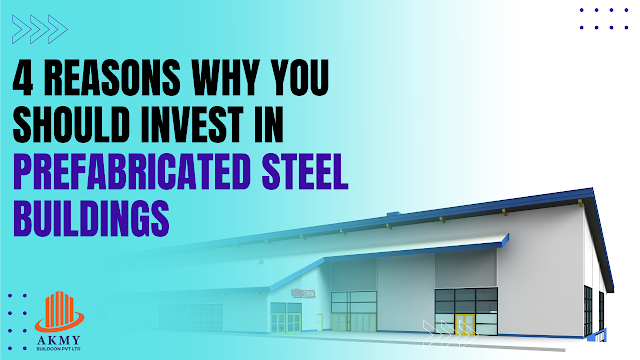Know The Components of Pre-Engineered buildings Structure
Pre-engineered buildings have become increasingly popular in recent years, thanks to their cost-effectiveness, durability, and flexibility. These buildings are made of steel building components that are prefabricated and assembled on site. They are designed to meet specific requirements and can be used for a wide range of applications, including warehouses, industrial buildings, and commercial structures. In this article, we will explore the key components of pre-engineered buildings that you need to consider for optimal performance.
- Primary Framing
The primary framing of pre-engineered buildings consists of rigid steel frames that
provide the structural support for the building. These frames are designed to
withstand heavy loads and forces, and are made up of columns, rafters, and
other structural elements. The columns are vertical members that support the
weight of the building, while the rafters are the horizontal members that
support the roof.
- Secondary Framing
Secondary framing consists of purlins,
girts, and eave struts that provide additional support for the primary framing.
Purlins are horizontal members that support the roof and walls, while girts are
vertical members that support the walls. Eave struts are horizontal members
that connect the roof to the walls and provide support for the eaves.
- Roofing and Cladding
The roofing and cladding of pre-engineered buildings are made of
metal panels that are designed to be weather-resistant and durable. The panels
are available in a variety of profiles, finishes, and colors to suit different
requirements. Roofing panels are designed to provide a watertight seal, while
wall cladding panels provide insulation and protection against the elements.
- Doors and Windows
Doors and windows are an essential steel building components of
pre-engineered buildings. They provide access to the building and allow natural
light to enter. Doors are available in a variety of styles, including rolling,
sliding, and overhead doors. Windows are available in different sizes and
styles, including fixed, sliding, and operable windows.
- Insulation
Insulation is an important component of
pre-engineered buildings that helps to regulate temperature and reduce energy
costs. Insulation is typically installed in the roof and walls of the building
and can be made of a variety of materials, including fiberglass, rock wool, and
foam. The thickness of the insulation depends on the climate and the intended
use of the building.
- Foundation
The foundation is the base of the building
and provides support for the entire structure. The foundation of pre-engineered buildings is typically
made of reinforced concrete and is designed to withstand heavy loads and
forces. The type of foundation used depends on the soil conditions and the size
of the building.
- Accessories
Steel
building accessories are optional components that
can be added to pre-engineered buildings to enhance their functionality and
appearance. Accessories include gutters, downspouts, vents, and skylights.
Gutters and downspouts help to channel water away from the building, while
vents and skylights provide natural ventilation and light.
When designing and constructing a
pre-engineered building, it is important to consider all of these components to
ensure optimal performance. Each component plays a critical role in the
functionality and durability of the building. By carefully selecting the right
components and ensuring that they are installed correctly, you can create a
pre-engineered building that is cost-effective, durable, and meets your specific
requirements.
In addition to steel building components listed above, it is also important to
consider factors such as building codes, zoning regulations, and environmental
conditions when designing and constructing a pre-engineered building. By working
with experienced pre-engineered building
manufacturer who have expertise in pre-engineered building design and
construction, you can ensure that your building meets all necessary regulations
and is built to last.
Conclusion
In conclusion, steel building components can provide numerous benefits for
construction projects. By using these components, builders can save time and
money while also ensuring optimal performance of the finished structure. When
considering pre-engineered building components, it is important to think about
factors such as the intended use of the building, the climate in the area, and
the level of customization needed. It is also crucial to work with a reputable
supplier who can provide high-quality components and reliable support throughout
the construction process. With careful consideration and expert guidance, steel building components can help
ensure the success of any construction project.



Comments
Post a Comment